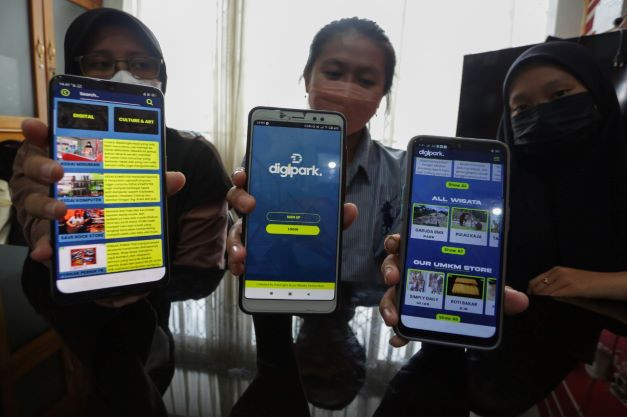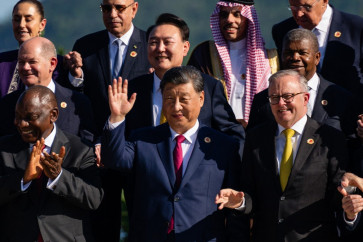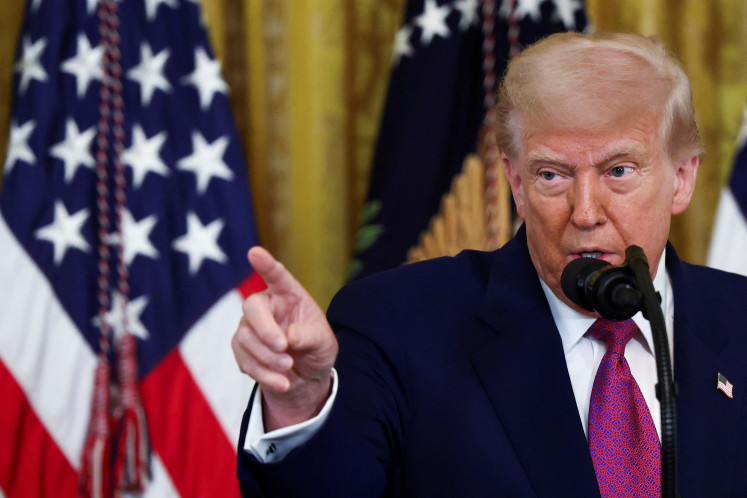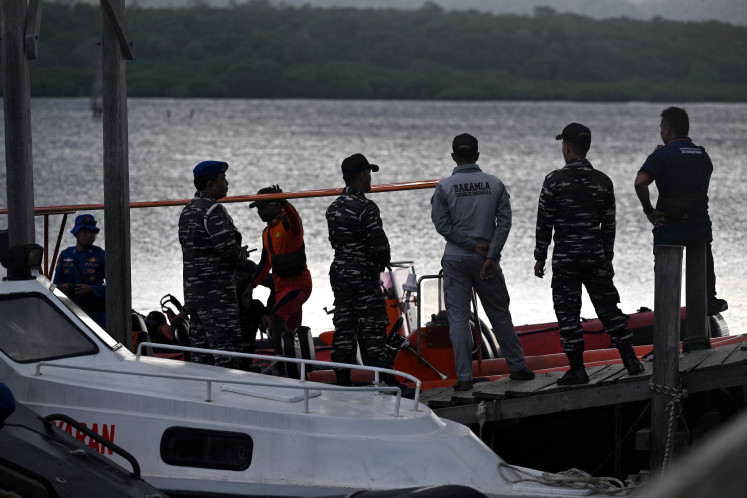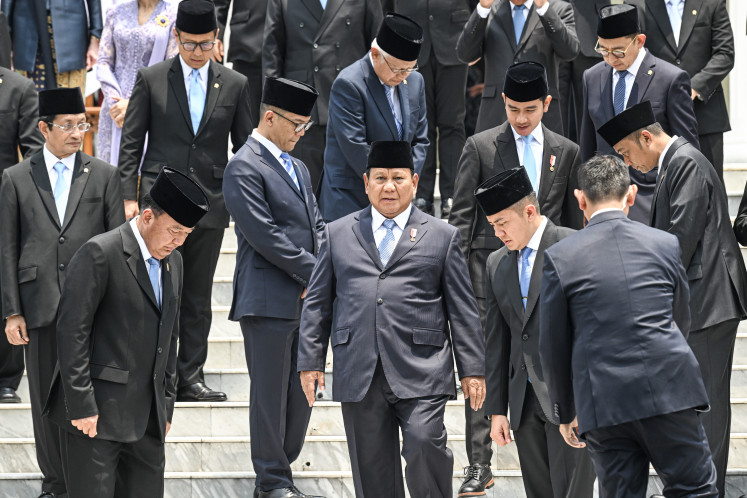Popular Reads
Top Results
Can't find what you're looking for?
View all search resultsPopular Reads
Top Results
Can't find what you're looking for?
View all search resultsRules for AI use needed in Southeast Asia’s smart cities
Privacy advocates have long raised concerns about how “smart” city technology has become interchangeable with surveillance – or, to be more specific, oversurveillance – through the use of AI-powered facial recognition technology and data mining.
Change text size
Gift Premium Articles
to Anyone
I
n Southeast Asia, 90 percent of reported COVID-19 cases occurred in urban areas of densely-populated cities. The pandemic exposed just how vulnerable urban areas are and raised questions as to how planners can future-proof cities for sustainable and resilient growth.
As Southeast Asia looks toward designing post-pandemic smart cities, a new report by EngageMedia and artificial intelligence (AI) researcher Jun-E Tan considers the importance of AI governance to protect people from the potential harms of this technology.
“Smart cities” have long been touted as the way forward for improving the quality of life of urban dwellers. By drawing from machine learning, communication networks, and data processed with AI to analyze trends and create forecasts, officials could – ideally – optimize city management: coordinate traffic, streamline energy usage, maintain public order, improve links between citizens and government, and possibly prevent another outbreak like COVID-19.
The aftermath of the pandemic also rapidly accelerated the deployment of AI technologies in Southeast Asia’s urban areas. As authorities tried to halt the spread of the deadly disease, they turned to rapid and widespread implementation of digital tools and surveillance technologies. Crucially, citizens were on board too, accepting requirements to provide sensitive personal information for the sake of safeguarding public health.
These measures may have been necessary at the onset of the crisis due to the urgent need to control the outbreak. But, two years into the pandemic, the long-overdue discussion on privacy, data security, and government overreach is entering public consciousness.
Even before the COVID-19 outbreak, Southeast Asian countries have been using AI technologies, though the capacity to do so varies. In the EngageMedia report, Tan pointed out that there is great disparity between Southeast Asian countries in terms of governments’ readiness to use AI for public service delivery.
Countries like Myanmar, Indonesia, Laos, Malaysia, the Philippines, Singapore, and Thailand use two or more types of surveillance technologies in the form of smart city implementations, facial recognition, and smart policing, with technologies acquired from China and the United States. The development of smart cities is also embedded in some countries’ national AI strategies, as in the case of Indonesia and Singapore.
According to a Nikkei Asia report, there are 350 smart city projects in development across 40 South and Southeast Asia cities. The application of smart city systems has become a selling point for Asian cities in the fight against COVID-19. From conducting contact tracing, using drones and autonomous AI to sanitize infected areas, and monitoring compliance with health protocols via smart surveillance, authorities have relied on the power of big data and AI.
Existing smart city infrastructure, such as command centers, were repurposed to become COVID-19 “war rooms”, becoming data hubs to monitor virus hotspots. In Singapore, facial recognition and public transportation records were used to trace the movement of citizens and assess the risk of viral spread.
Privacy advocates have long raised concerns about how “smart” city technology has become interchangeable with surveillance – or, to be more specific, oversurveillance – through the use of AI-powered facial recognition technology and data mining. Behind the rosy outlook of safer streets and better-managed cities, the expanded use of AI smart city technologies wherein surveillance and the gathering of civilian data go unchecked and unregulated have implications on privacy, autonomy, freedom of speech, and data protection.
This is particularly worrisome in the context of creeping authoritarianism in Southeast Asia, as Tan pointed out. Most Southeast Asian countries assessed in the 2021 Freedom on the Net report utilized various forms of internet control, such as blocking political or religious content, passing laws increasing censorship, arresting citizens for their social media content, and manipulating online discourse via pro-government commentators.
Additionally, a December 2020 report by Citizen Lab revealed that the governments of Indonesia, Malaysia, Thailand, and Vietnam were likely clients of the cyberespionage firm Circles, enabling them to snoop on calls, texts, and phone locations.
The rapid pace of digitalization in many Southeast Asian countries also exposes these countries to digital threats that could paralyze services. Consider the October 2021 Facebook outage and how it had serious repercussions in many Asian countries dependent on the social media giant for key services such as e-commerce and telemedicine. Without adequate data security measures, cities are at risk of system breaches and cyberattacks.
Complicating the situation are pre-existing problems in Southeast Asia: The digital divide, lack of digital literacy among citizens, lack of adequate laws to regulate the use of AI, and weak institutions to implement such regulations.
The data privacy issues of the tech solutions implemented at the start of the pandemic show the dangers of implementing half-baked measures without understanding how they impact people’s rights. How then could AI technologies be applied in designing post-pandemic smart cities? Tan’s research pushes the idea of AI governance, which considers these questions: How do we set rules for the use of AI, and how can people be protected from the potential harms of AI?
According to Tan, situating the use of AI in society is key. In the first place, is the technology even needed or wanted by the people who are supposed to use them? Policymakers should clearly identify what, why, and how AI technologies are used by people in particular contexts. This prevents the deployment of AI to solve societal problems despite little to no evidence of its effectiveness – what Harvard Technology and Public Purpose fellow Rebecca Williams calls the tendency for smart cities to reinforce technological solutionism, or seeing technology as the panacea to political and moral issues. Instead of looking to use technology to optimize solutions, it is more important to reframe the problem around the actual needs of society.
Tan also argues that AI governance entails embedding ethical judgements into lawmaking, building a case for what can and cannot be done with the technology. Such an undertaking would require the participation of various stakeholders.
While government authorities serve as key regulators and implementers of AI in public functions, Tan emphasizes the key role of civil society in identifying AI risks and the social problems that can potentially benefit from the use of AI technology.
Aside from ensuring that digital safety and security is built into smart city infrastructure and systems, Tan says a whole-of-society approach is strongly needed in AI governance. This entails increasing the capacity of both state and civil society actors to meaningfully participate in discussions surrounding the use of AI-based technology.
By increasing people’s digital literacy, for instance, they would be more aware of the benefits and harms of using AI, empowering them to push back and ensure check-and-balance mechanisms are working.
As Southeast Asia starts imagining what cities of the future would look like in a post-COVID-19 world, care must be taken to ensure that the next normal won’t reinforce, replicate, and perpetuate surveillance mechanisms that undermine civil freedoms, privacy, and autonomy.
***
This article is part of EngageMedia's work on AI and human rights in Southeast Asia.

